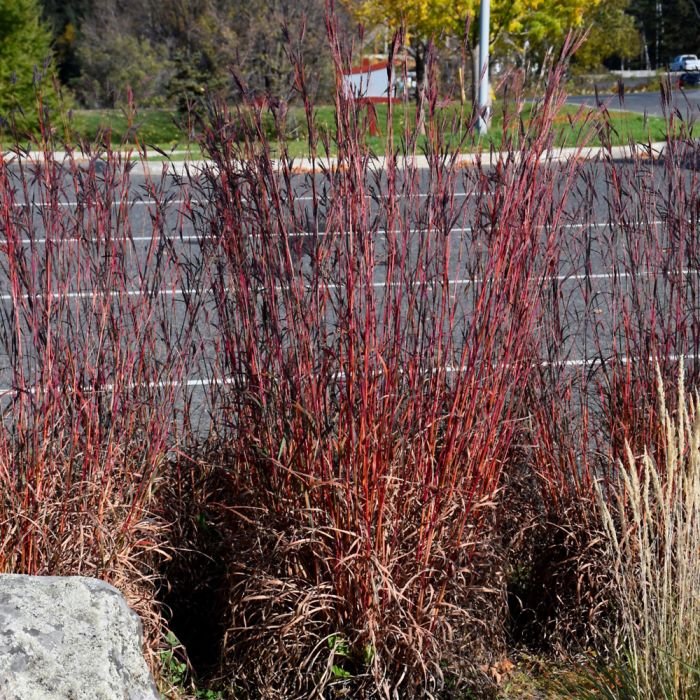THE GARDEN SCOOP: The Answer is Grasses...
The answer is grasses! Come check out what our Garden Scoop expert has to say about grasses and the many benefits.



Out of stock
Coming soon, still growingRed October Bluestem | Andropogon gerardii 'Red October'
Other Names: Big Bluestem, Turkey Foot
This extraordinary selection of native prairie grass will reach five to six feet tall with dark green foliage that develops purplish-red highlights by late summer, then turns a vivid scarlet red in fall; plant in full sun for best colorDiscover an unparalleled selection of perennials at Gertens! With the largest variety in Minnesota, we offer endless options of colorful perennials, natives, and pollinator plants to beautify your garden year after year. From vibrant flowers to lush foliage, our perennials are perfect for adding beauty and charm to your outdoor space. Visit Gertens today and see why we're known as Minnesota's Destination Garden Center!
Red October Bluestem is an exceptional native cultivar. It has an upright habit with foliage that changes through the seasons from green with red highlights to burgundy to vivid scarlet red after the first frost. Attractive to butterflies, birds and pollinators, it's deer resistant. Even the turkey-foot shaped seed heads that appear in fall are shades of red.
Red October Bluestem is an herbaceous perennial grass with an upright spreading habit of growth. It brings an extremely fine and delicate texture to the garden composition and should be used to full effect.
This is a relatively low maintenance plant, and is best cleaned up in early spring before it resumes active growth for the season. It is a good choice for attracting birds to your yard. It has no significant negative characteristics.
Red October Bluestem is recommended for the following landscape applications;
Red October Bluestem will grow to be about 5 feet tall at maturity, with a spread of 30 inches. It tends to be leggy, with a typical clearance of 1 foot from the ground, and should be underplanted with lower-growing perennials. It grows at a medium rate, and under ideal conditions can be expected to live for approximately 10 years. As an herbaceous perennial, this plant will usually die back to the crown each winter, and will regrow from the base each spring. Be careful not to disturb the crown in late winter when it may not be readily seen!
This plant should only be grown in full sunlight. It is an amazingly adaptable plant, tolerating both dry conditions and even some standing water. It is considered to be drought-tolerant, and thus makes an ideal choice for a low-water garden or xeriscape application. It is not particular as to soil type or pH, and is able to handle environmental salt. It is highly tolerant of urban pollution and will even thrive in inner city environments. This is a selection of a native North American species. It can be propagated by division; however, as a cultivated variety, be aware that it may be subject to certain restrictions or prohibitions on propagation.
| Common Family Name | Big Bluestem |
|---|---|
| Gerten Grown Plants | Gerten Grown Plants |
| Sun Preference | Full-Sun |
| Bloom Time | July, August, September, October |
| Mature Spread (Range) | 24" - 36" |
| Mature Height (Range) | 37" - 48" |
| USDA Hardiness Zone | 3, 4, 5, 6, 7, 8, 9 |